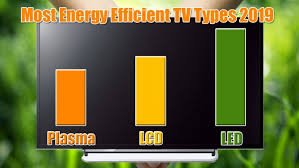The Ultimate Guide to Energy Efficient TV Save Money and the Environment

The Ultimate Guide to Energy Efficient TV: Save Money and the Environment
As technology advances and more people opt for larger screens, the energy consumption of televisions becomes a significant concern. Finding an energy efficient TV allows consumers to enjoy their favorite movies and shows while minimizing their impact on the environment. In this article, we will explore various aspects of energy efficient televisions, including how they work, the benefits they offer, and what to look for when making a purchase. For a detailed comparison of the top models, check out the energy efficent tv https://top10energyefficiency.org.uk/top-5-energy-efficient-tvs/.
Understanding Energy Efficiency in TVs
Energy efficiency refers to the ability of a device to perform its required function while consuming the least amount of energy possible. In the context of TVs, this means that an energy efficient television will use less electricity compared to a traditional model without sacrificing picture quality or performance.
TV energy consumption is measured in watts (W) and varies by model and screen technology. The most popular types of televisions are LED, OLED, and QLED, each exhibiting different levels of efficiency. LED TVs generally consume less power than older technology, such as plasma or LCD televisions.
Benefits of Energy Efficient TVs
Investing in an energy efficient TV comes with numerous advantages that go beyond just lower electricity bills:
- Cost Savings: Energy efficient TVs consume less power, leading to reduced energy bills over time.
- Environmental Impact: By using less energy, consumers contribute to a decrease in greenhouse gas emissions, helping combat climate change.
- Longevity: Energy efficient models often feature superior technology that can result in longer lifespans and better performance.
- Government Rebates: In some regions, consumers may be eligible for tax rebates or incentives for purchasing energy efficient appliances.
Key Features to Look For
When shopping for an energy efficient TV, consider these key features to ensure you’re making the best choice:
1. Energy Star Certification
One of the first things to check is whether the TV has an Energy Star certification. This label indicates that the model meets strict energy efficiency guidelines set by the U.S. Environmental Protection Agency (EPA).
2. Display Technology
LED TVs are generally the most energy efficient. If you are considering OLED or QLED models, research their energy consumption rates, as they may vary greatly.
3. Screen Size
The size of the TV can greatly impact its energy usage. While larger screens typically consume more power, advancements in technology mean that many large models are still energy efficient.
4. Brightness Levels
Higher brightness levels usually equate to higher energy consumption. Consider models with automatic brightness adjustment features that optimize energy use based on ambient light.
5. Operating Modes
Many energy efficient TVs come with eco modes or settings that allow the device to reduce power consumption when not in active use.
Comparing Popular Models
Several brands are known for producing energy efficient TVs. Here’s a comparison of a few popular models based on energy consumption and features:
| Brand & Model | Type | Screen Size | Energy Consumption (W) |
|---|---|---|---|
| Samsung Q80T | QLED | 55″ | 98 |
| LG CX | OLED | 55″ | 89 |
| Sony X950H | LED | 55″ | 101 |
| TCL 6-Series | QLED | 55″ | 85 |
How to Reduce Energy Consumption Further
In addition to choosing an energy efficient TV, there are several steps you can take to reduce overall energy consumption:
- Turn off the TV when not in use. Consider using a smart power strip that cuts power when devices are off.
- Reduce the brightness settings; most TVs are set to higher brightness levels by default.
- Limit the use of features such as motion smoothing or additional audio settings that consume more power.
- Regularly update the TV’s software to improve performance and energy efficiency.
Conclusion
As we continue to prioritize sustainability and responsible consumption, choosing an energy efficient TV is a practical step for both individuals and the environment. By understanding the key features, benefits, and models available, consumers can make informed decisions that lead to long-term savings and a healthier planet. Look for reputable brands, compare energy consumption rates, and consider the environmental impact of your purchase to make the best choice.


